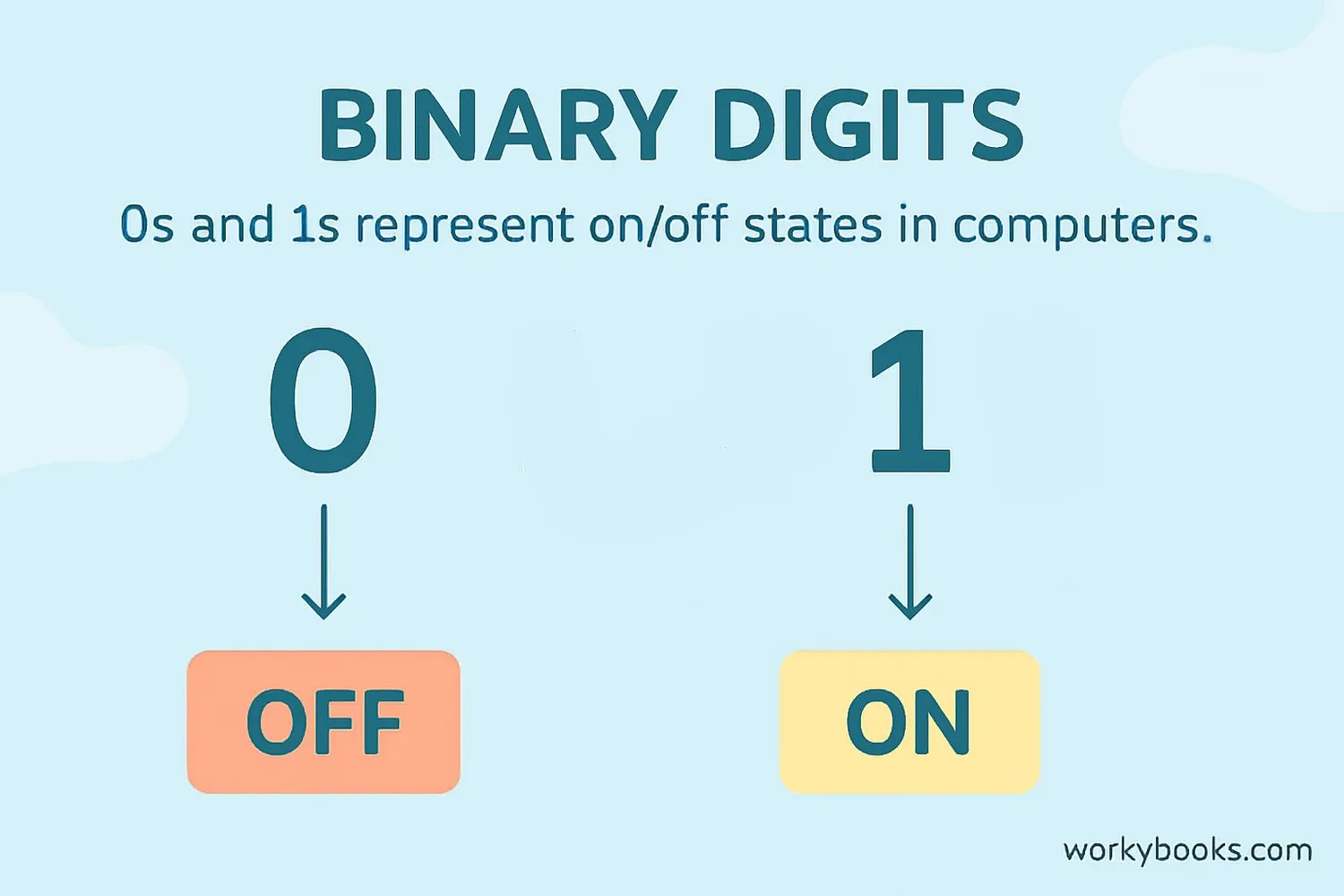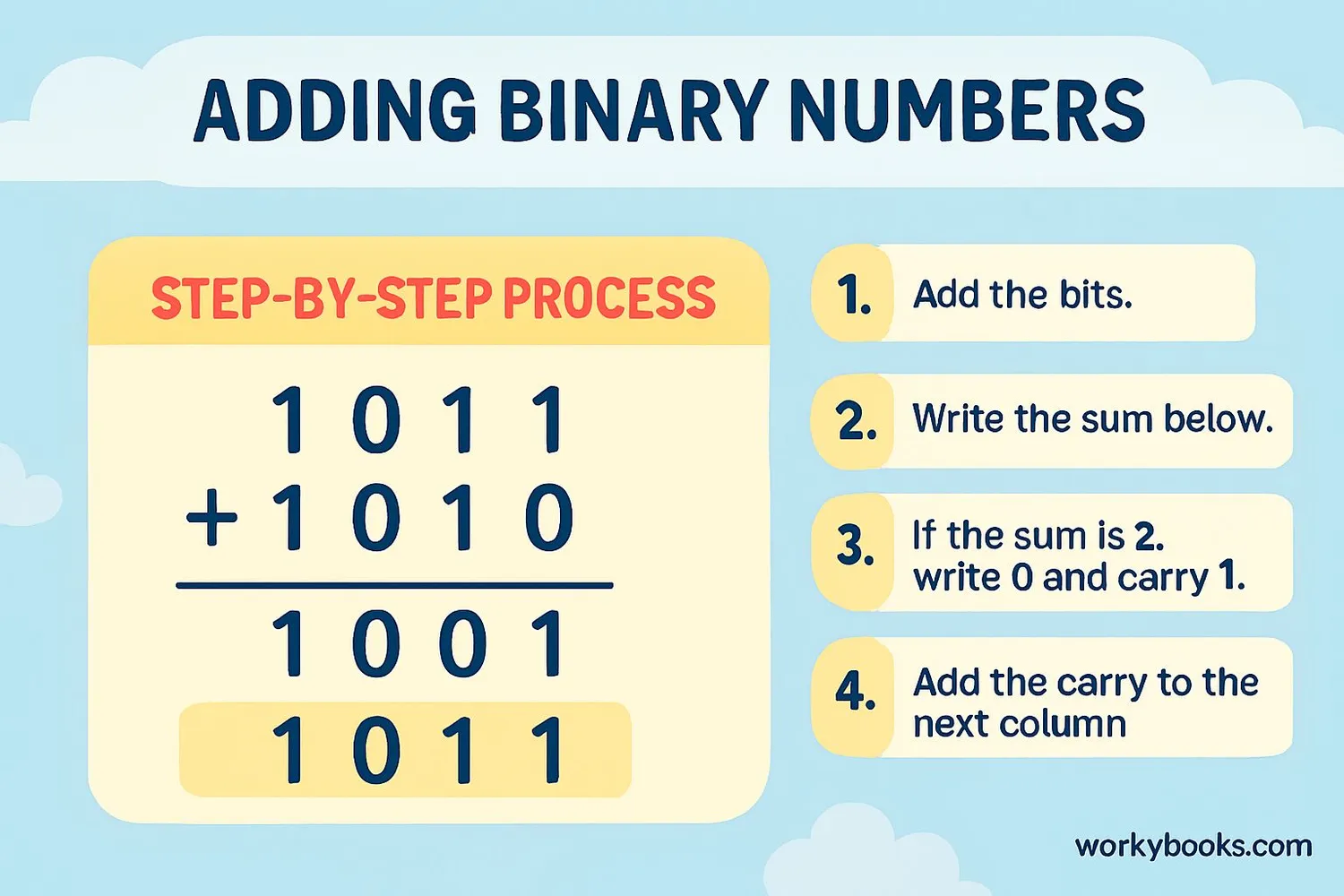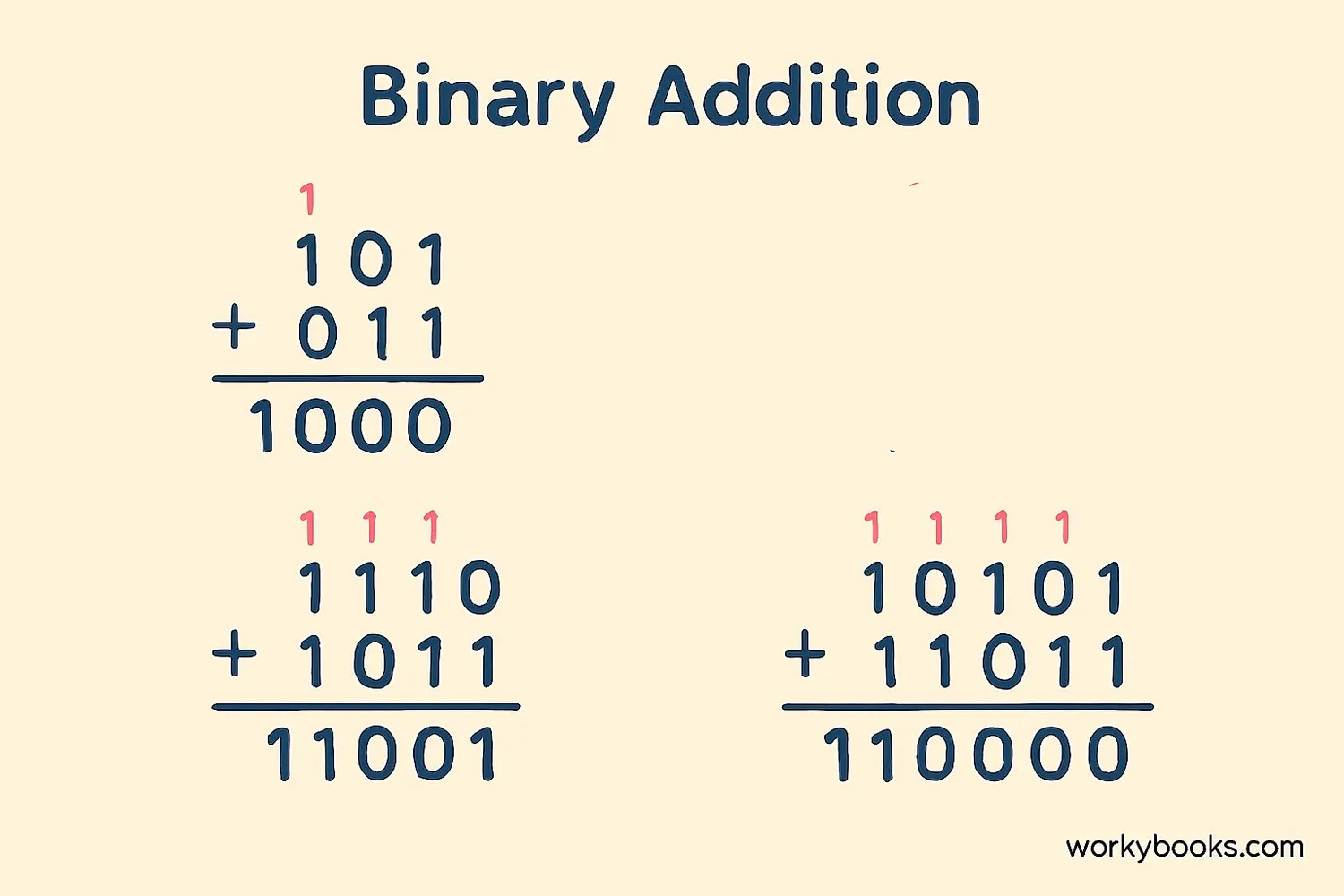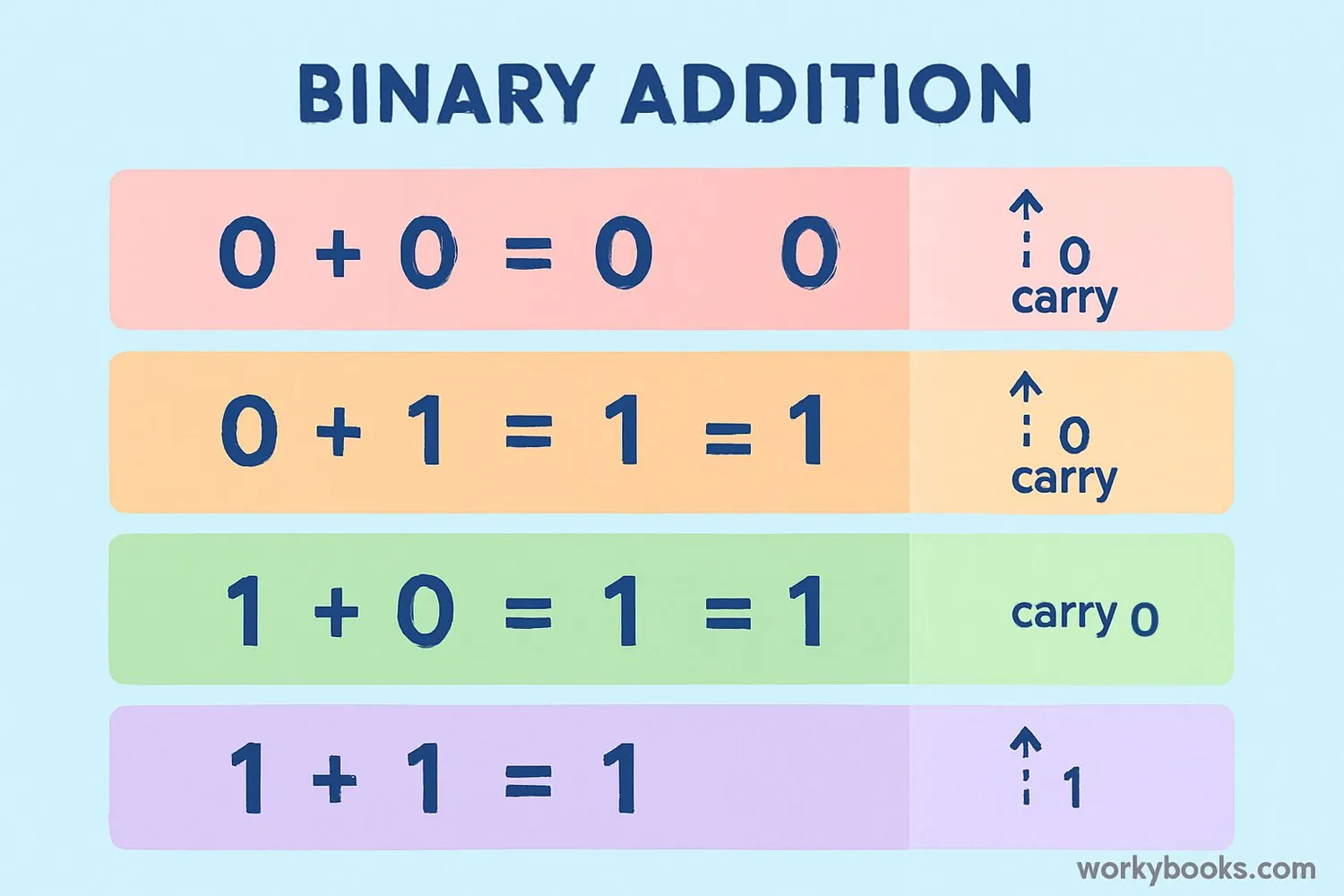Binary Addition - Definition, Examples, Quiz, FAQ, Trivia
Learn how computers add numbers using only 0s and 1s
What is Binary?

Binary is a number system that computers use to understand information. Unlike our everyday decimal system that uses 10 digits (0-9), binary uses only two digits: 0 and 1.
Each binary digit is called a "bit". Computers use binary because they have billions of tiny switches that can only be either ON (1) or OFF (0).
Binary addition works just like regular addition, but with only two digits. Learning binary helps us understand how computers process information and solve math problems.
Key Concept
Binary is the language of computers. Every piece of information in a computer is stored as patterns of 0s and 1s.
How to Add Binary Numbers

Adding binary numbers is similar to adding decimal numbers. We work from right to left, column by column. Here's how:
Basic Rules
When adding two 1s, we write down 0 and carry over 1 to the next column.
Example: Add 101 (5 in decimal) and 110 (6 in decimal)
Step 1: Start from the right → 1 + 0 = 1
Step 2: Next column → 0 + 1 = 1
Step 3: Left column → 1 + 1 = 10 (write 0, carry 1)
Step 4: Write the carried 1 → 1011
So 101 + 110 = 1011 (which is 11 in decimal). Great job!
Remember
When you get 1 + 1, write down 0 and carry 1 to the next column. This is similar to when you get 5+5 in regular addition.
Binary Addition Rules

Here are all the rules you need to know for adding binary numbers:
| First Number | Second Number | Carry In | Result | Carry Out |
|---|---|---|---|---|
| 0 | 0 | 0 | 0 | 0 |
| 0 | 1 | 0 | 1 | 0 |
| 1 | 0 | 0 | 1 | 0 |
| 1 | 1 | 0 | 0 | 1 |
| 0 | 0 | 1 | 1 | 0 |
| 0 | 1 | 1 | 0 | 1 |
| 1 | 0 | 1 | 0 | 1 |
| 1 | 1 | 1 | 1 | 1 |
The most important thing to remember is that when you add two 1s, you get 0 and carry 1 to the next column. This is similar to how in decimal addition, when you add 5+5, you get 0 and carry 1 to the next column.
Practice Tip
Start with small numbers and work your way up. Remember to write the carry-over above the next column!
Solved Examples

Let's solve some binary addition problems together:
Example 1: Add 101 + 011
101
+ 011
------
1 ← carry
101
+ 011
------
0
11 ← carry 101 + 011 ------ 00
1 11 ← carry 101 + 011 ------ 000
101 + 011 ------ 1000
Answer: 101 + 011 = 1000 (which is 8 in decimal)
Conversion Tip
You can check your binary answers by converting to decimal. 101 is 5, 011 is 3, 5+3=8, and 1000 in binary is 8!
Binary Addition Quiz
Test your binary addition skills with this 5-question quiz. Choose the correct answer for each question.
Frequently Asked Questions
Here are answers to common questions about binary addition:
Binary Trivia
Discover interesting facts about binary numbers:
Ancient Binary
The concept of binary numbers dates back to ancient India and China. The Indian scholar Pingala (3rd century BC) developed a binary system for describing poetic meters.
Computer Brains
The central processing unit (CPU) in your computer contains millions of tiny transistors that act as switches. These switches process information using binary addition at incredible speeds.
Space Messages
The Arecibo message sent to space in 1974 was a binary-encoded message containing information about humanity. It consisted of 1,679 binary digits arranged in a grid.
Human Binary
Some people can perform binary calculations in their head! The world record for mental binary addition is adding two 256-bit binary numbers in just 1 minute and 42 seconds.





